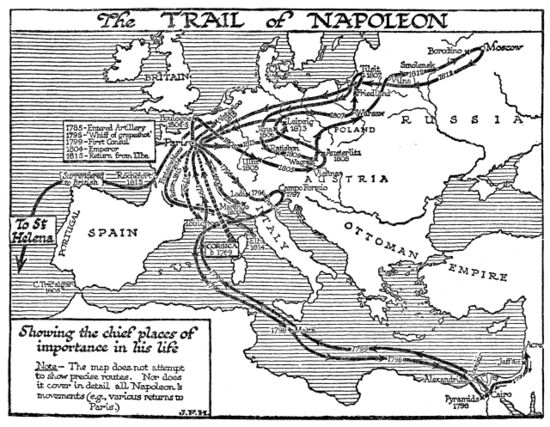imported>Chunbum Park |
imported>John Stephenson |
| (228 intermediate revisions by 8 users not shown) |
| Line 1: |
Line 1: |
| {{Image|Two diode structures.PNG|right|200px|Mesa diode structure (top) and planar diode structure with guard-ring (bottom).}} | | {{:{{FeaturedArticleTitle}}}} |
| | | <small> |
| A '''[[semiconductor diode]]''' is a two-terminal device that conducts current in only one direction, made of two or more layers of which at least one is a semiconductor. An example is the ''pn''-diode, made by joining a ''p''-type semiconducting layer to an ''n''-type semiconducting layer. For a discussion of dopant impurities and the terminology ''p-'' and ''n-''type. see [[Semiconductor#Dopant_impurities|dopant impurities]].
| | ==Footnotes== |
| | | {{reflist|2}} |
| The figure shows two of the many possible structures used for ''pn-''semiconductor diodes, both adapted to increase the voltage the devices can withstand in reverse bias. The top structure uses a mesa to avoid a sharp curvature of the ''p<sup>+</sup>-''region next to the adjoining ''n-''layer. The bottom structure uses a lightly doped ''p-''guard-ring at the edge of the sharp corner of the ''p<sup>+</sup>-''layer to spread the voltage out over a larger distance and reduce the electric field. (Superscripts like ''n<sup>+</sup>'' or ''n<sup>−</sup>'' refer to heavier or lighter impurity doping levels.)
| | </small> |
| ==Types== | |
| Semiconductor diodes come in a large variety of types:
| |
| *''pn''-diode: The ''pn'' junction diode consists of an ''n''-type semiconductor joined to a ''p''-type semiconductor.
| |
| *Zener diode: The Zener diode is a special type of ''pn''-diode made to operate in the reverse breakdown region, and used often as a voltage regulator. The breakdown voltage in these diodes is sometimes called the ''Zener voltage''. Depending upon the voltage range designed for, the diode may break down by either Zener breakdown, an electron tunneling behavior, or by avalanche breakdown.
| |
| *Schottky diode: The Schottky diode is made using a metal such as aluminum or platinum, on a lightly doped semiconductor substrate.
| |
| *Tunnel diode: Like the Zener diode, the tunnel diode (or Esaki diode) is made up of heavily doped ''n-'' and ''p''-type layers with a very abrupt transition between the two types. Conduction takes place by electron tunneling.
| |
| *Light-emitting diode: The light-emitting diode is designed to convert electrical current into light.
| |
| *Photodiode: The photodiode is the inverse of the light-emitting diode, acting as a photodetector, converting incident light to a detectable electric current.
| |
| *''pin''-diode: The ''pin''-diode is made of three layers: an intrinsic (undoped) layer between the ''p''- and ''n''-type layers. Because of its rapid switching characteristics it is used in microwave and radio-frequency applications.
| |
| *Gunn diode: The Gunn diode is a ''transferred electron device'' based upon the Gunn effect in III-V semiconductors, and is used to generate microwave oscillations.
| |
| *Varactor: a ''pn''-junction used in reverse bias as a voltage-variable capacitor for tuning radio receivers. The term ''varactor'' also is used for devices that behave like back-to-back Zener diodes.
| |
| | |
| [[semiconductor diode|...]]
| |
Latest revision as of 10:19, 11 September 2020
Napoleon (Napoleon Bonaparte or, after 1804, Napoleon I, Emperor of the French) was a world historic figure and dictator of France from 1799 to 1814. He was the greatest general of his age--perhaps any age, with a sure command of battlefield tactics and campaign strategies, As a civil leader he played a major role in the French Revolution, then ended it when he became dictator in 1799 and Emperor of France in 1804 He modernized the French military, fiscal, political legal and religious systems. He fought an unending series of wars against Britain with a complex, ever-changing coalition of European nations on both sides. Refusing to compromise after his immense defeat in Russia in 1812, he was overwhelmed by a coalition of enemies and abdicated in 1814. In 1815 he returned from exile, took control of France, built a new army, and in 100 days almost succeeded--but was defeated at Waterloo and exiled to a remote island. His image and memory are central to French national identity, but he is despised by the British and Russians and is a controversial figure in Germany and elsewhere in Europe.
Rise to Power
Once the Revolution had begun, so many of the aristocratic officers turned against the Revolutionary government, or were exiled or executed, that a vacuum of senior leadership resulted. Promotions came very quickly now, and loyalty to the Revolution was as important as technical skill; Napoleon had both. His demerits were overlooked as he was twice reinstated, promoted, and allowed to collect his back pay. Paris knew him as an intellectual soldier deeply involved in politics. His first test of military genius came at Toulon in 1793, where the British had seized this key port. Napoleon, an acting Lieutenant-Colonel, used his artillery to force the British to abandon the city. He was immediately promoted by the Jacobin radicals under Robespierre to brigadier-general, joining the ranks of several brilliant young generals. He played a major role in defending Paris itself from counter-revolutionaries, and became the operational planner for the Army of Italy and planned two successful attacks in April 1794. He married Josephine (Rose de Beauharnais) in 1796, after falling violently in love with the older aristocratic widow.[1]
- ↑ Englund pp 63-73, 91-2, 97-8
